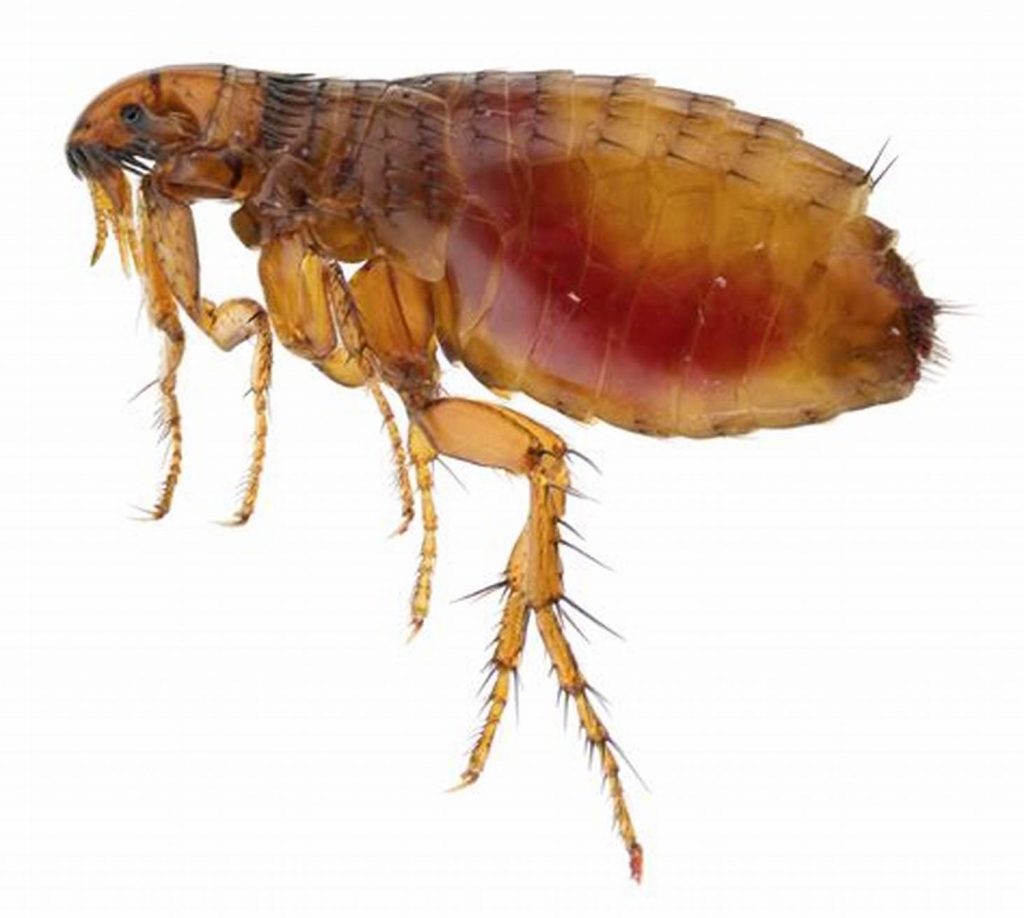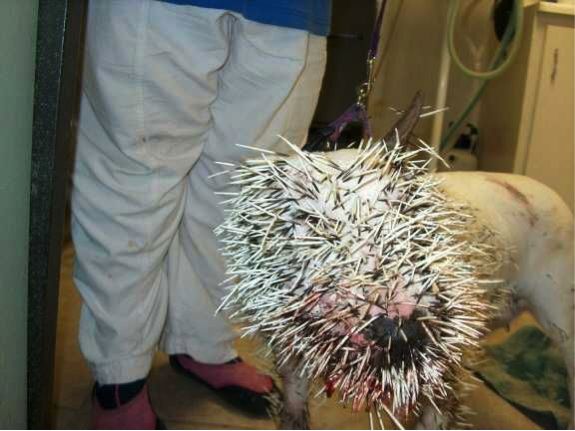One of the more common after-hours emergency presentations that we see is the dog that has unexpectedly experienced a seizure. The excited owner calls us in a panic and loads the dog into the car and brings it in for us to evaluate. Usually, by the time it gets to our clinic the seizure is over and the dog is back to normal, or is in the process of slowly returning to normal. I examine the pet and usually find no problems on the physical. We generally offer a diagnostic workup, which includes a complete blood count, blood chemistry evaluation, and fecal exam all of which the owner may or may not choose to pursue. We also offer them the opportunity to hospitalize the pet overnight for observation, which most decline. At that point it’s time for the seizure discussion. It goes pretty much as follows:
Seizures can be caused by a variety of factors including trauma (such as a blow to the head), poisoning, an infection involving the nervous system, a brain tumor, various organ diseases and metabolic conditions such as liver disease, hypoglycemia, hypoxia, and so forth. There can be congenital and hereditary causes also. Most commonly we are unable to find a specific inciting cause for the seizure activity and those seizures are usually considered to fall into the category of idiopathic epilepsy. Epilepsy is quite common in dogs and usually first appears somewhere around one to five years of age. Seizures that have their initial onset later in life, say at ten or twelve years of age, are often caused by the gradual development of a brain tumor, while seizures that occur in the very young dog may be due to congenital liver disease. However, all of these statements are just broad generalizations.
Remember, no medication is completely safe. If it were, it wouldn’t do anything.
When describing the mechanics of a seizure, I loosely compare a seizure to an itch on our skin; only the irritation in this case is within the neural pathways of the brain. When our skin has an itch, we address it by scratching and the itch goes away. The seizure is a similar response on the part of the brain to address an irritated focus within the brain’s tissue. The brain is scratching its neurological itch. Just like with an itch on our skin, when we scratch it, the itch settles down and permanently or temporarily goes away. Similarly, after a seizure the irritated focus in the brain quiets down and permanently or temporarily resolves. In most cases no harm is done. Occasionally however, if the skin is scratched excessively or violently, it can be damaged. With a seizure, on occasion the seizure may be more severe or longer lasting and damage to the brain can occur.
Just because your pet has had a seizure does not mean that the outlook is bleak. It does mean that you are likely to see another seizure at some point, but not necessarily any time soon. I once owned a dog years ago, a Basset Hound named Samwise, who had a seizure. I was walking him one day on his leash when he fell over, lost consciousness, and went into a generalized tonic-clonic seizure (what would be described as a grand malseizure, in human terms) that lasted for about a minute or so. He recovered after a brief rest, got up, and walked away and was fine. This event happened when he was about two years of age and he lived to be over ten years of age and never had another seizure. So, just because you have seen a seizure, does not mean that there will necessarily be more. It just means that your pet has a greater likelihood of having additional seizures in the future compared to a dog that has not had one.
There are three phases to a seizure. The pre-ictal or prodromal phase may or may not be evident. It is a behavior that is recognizable as one that occurs prior to the onset of the seizure itself. In human epileptics it is often referred to as an aura.
The second phase is ictus, or the actual seizure itself. Seizures come in all shapes and sizes and a seizure in one individual may differ completely from those occurring in another dog. The seizure activity may be generalized involving the entire brain with loss of consciousness, and motor activity involving all of the muscles, or it may be partial and not involve the conscious brain and only some of the muscle groups may experience some moderate twitching. The pet may remain standing and just seem to be “gone” briefly before resuming normal activity. Regardless of the type, the nature of the seizure activity often has a tendency to be fairly consistent from one seizure to the next in any given patient. Over time the character of the seizure may change gradually but usually not dramatically from one seizure episode to the next. And usually a seizure doesn’t last any longer than a few seconds to a few minutes before it stops.
Finally, after the seizure is over, there is generally a period of recovery that we call the post-ictal phase. This period is characterized by disorientation, sometimes a noticeable behavior change, the pet may be unable to get up for a period of time, and often some stumbling and incoordination may be seen. It may last anywhere from a few minutes to several hours. If the seizure is not characterized by severe tonic-clonic activity (i.e. convulsions), sometimes the pet owner may have difficulty determining where the actual seizure ends and the post-ictal period begins.
During a seizure, keep your hands away from the mouth. Don’t worry about your pet swallowing its tongue. Worry about possibly getting bitten if the mouth is chomping uncontrollably. If you are injured it reduces your ability to care for your pet properly. If it is a small dog, you can cradle it gently in your arms and gently and quietlytalk it down. Panic and excitement on your part may actually exacerbate the situation. Don’t cradle the dog on its back. Cradle it on its chest so that if it happens to vomit, it won’t aspirate. If you have a large dog, carefully pull her out into the center of the floor away from electrical cords, tables and chairs, or anything else that might present a hazard. You don’t want her getting wedged under a chair or knocking over a floorlamp. Keep your hands out of her mouth and gently pet her and try to quiet her down. The soothing sound of your voice and a soft touch may help bring her out of it. If your dog is one of those dogs that tend to become aggressive after a seizure (a rare occurrence but it can happen), use caution and keep children away until the aggressiveness has passed. The dog may not recognize you. Any time there is aggressive behavior you should consult with a veterinarian.
I recommend that you as the pet owner should start a log and keep a complete and accurate record of your pet’s seizure activity. Write down a physical description of the event: Which side was the dog lying on? Did s/he lose consciousness? Vomit? Have a bowel movement? Chomp the jaws and/or drool or foam? Paddle the legs? Which legs and did all four legs do the same thing or did different parts of the body do different things? Was it at night or while the dog was sleeping? Were there any unusual environmental factors, such as friends visiting, roadwork outside of your house, a thunderstorm or gunshots fired, a new pet in the vicinity or anything else that might possibly play a role? For the first visit to your veterinarian or a subsequent visit when there has been a noticeable change in seizure activity a brief video of the event might be worth taking along. But mostly these records are for your own use so that you can monitor any changes in the progression of the seizure activity.
Consider having a blood workup done. I don’t insist on it if the seizure is a mild one and has passed and there does not seem to be any immediate threat. However, if a subsequent seizure occurs I think it’s a good idea to check. We expect the blood workup to be essentially normal, but occasionally we get surprised. That is the purpose of diagnostic work. If an animal is not obviously sick, we expect the blood work to be pretty much normal, but occasionally we find something. I always put it this way: if we don’t look, we don’t know what we might be missing. Also, if we are considering any type of seizure control medication, a complete blood workup is essential prior to starting the medicine.
Should you put your pet on seizure medication? Most of the time, the answer to that question is NO. The purpose of seizure medication is to reduce the frequency of seizures down to an acceptable number. I generally aim for something less than about two or three a month. We don’t generally expect it to completely eliminate them. If we do not have a record (i.e. your log of the patient’s seizure activity) of how frequently the seizures are occurring, then we have no way of determining if the medication is effective. I have seen some patients come into my office for other issues, the owner mentions the dog is epileptic and is on seizure control medication. When I inquire when was the last time he had a seizure and the response is, “Three years ago.” I get a little suspicious. If the dog had a seizure and the owner panicked, and the veterinarian jumped in and started it on medication in order to quell the owner’s concerns, this patient may very well not need it. It might be a case like my dog that I mentioned earlier and the medication may really be totally unnecessary. Medicating a pet that doesn’t need it is just as bad as not medicating a pet that does. Although seizure medication is usually pretty safe, you should always remember, no medication is completely safe. If it were, it wouldn’t do anything.
Occasionally we’ll see a patient who has a very long, or very severe seizure as its first episode. Or that patient may have a cluster of several seizures in a short time or in a single day, kind of out of the blue. In these instances I will usually run a complete lab workup and start it on phenobarbital in an effort to settle things down and not risk another severe episode or cluster of seizures. Every case tends to be different and there are exceptions to every situation.
Very severe or prolonged seizures or a number of seizures over a relatively short period of time are a medical emergency. Don’t allow your pet to seizure for a prolonged period of time or exceptionally violently without getting medical attention. Prolonged or repeated convulsions cause an elevation of the body temperature and potentially serious hyperthermia, which itself can be deadly. Also the brain sometimes is more likely to be permanently injured by severe or repeated seizure episodes. Get to your vet or find the local ER.
As mentioned earlier, most epileptic dogs do fine. Most of them have an occasional mild to moderate seizure, and yet live a long and healthy, relatively normal life without ever needing medication. The pet owner is often severely traumatized by the first seizure and perhaps the next couple after that, but usually once they have gotten over the initial shock and surprise of the situation, most owners adjust to the situation surprisingly well and it may even become routine.




